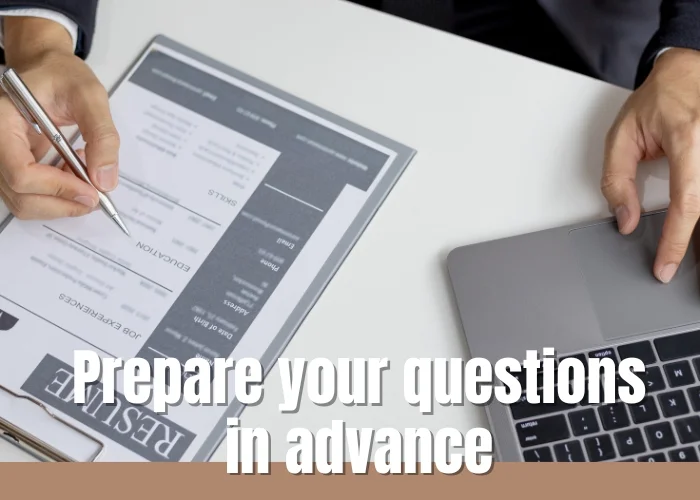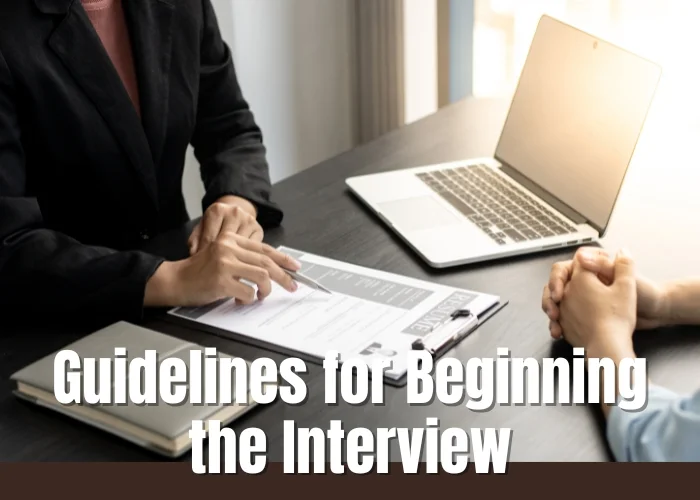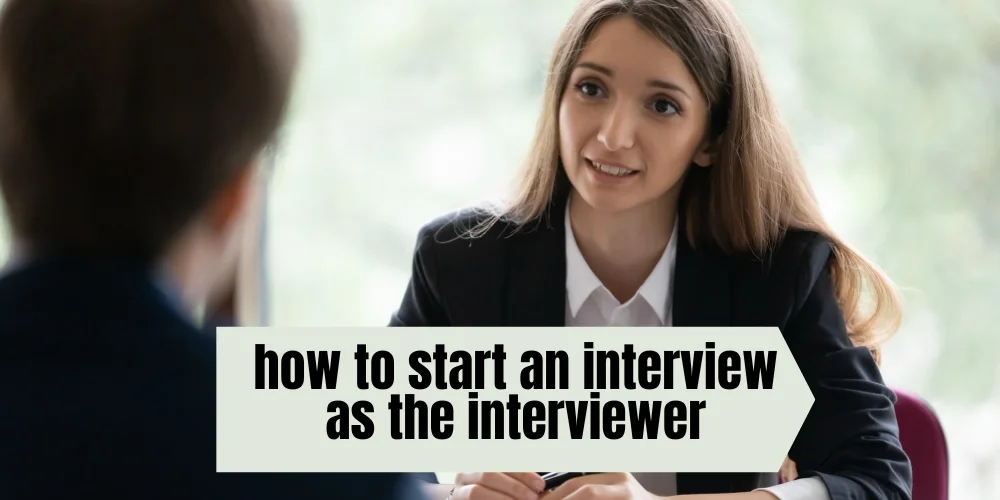A candidate’s only in-person chance to speak with possible new coworkers is frequently during the interview process. Leaving the interview process with a positive impression is crucial to guaranteeing that candidates are motivated and excited about the position. Let’s talk about how to start an interview as the interviewer.
You want to make a good first impression because the first few minutes of the interview will determine the direction of the discussion. As the interviewer, use these interview etiquette guidelines and the sample script below to help ensure a fruitful and constructive exchange.
An Overview of the Interviewing Process in Brief
Hiring managers, HR representatives, department heads, and team members will conduct interviews throughout their careers. Interviews can be conducted with job hopefuls as part of the hiring process or with workers as part of performance reviews. It would help if you had various soft skills, such as clear communication and active listening, to be a competent interviewer.
How Interviewers Should Get Ready for an Interview
To streamline the process, prepare for the interview before walking in. Think about making the following arrangements:
Make a framework:
A framework can facilitate the interviewee’s entry into the discourse. In a job interview, for instance, begin by getting to know the candidate by asking about their most recent position and what they like about it. Then, go into greater detail about the projects they oversaw and the results they achieved.
Make an investigation:
To assist you in formulating interview questions, review the applicant’s application, cover letter, and resume. Ensure you are familiar with the job description and the duties and skills required for the position.
Prepare your questions in advance:

Make a list of inquiries in preparation for the meeting. Ask the candidate about their experience, qualifications, and any noteworthy details from their resume during the job interview. To learn more about the candidate’s personality, ask them various exciting questions and situational and behavioral inquiries. Open-ended inquiries, as opposed to yes-or-no ones, typically elicit more detailed responses.
Approach with a goal in mind:
You need to go into the interview with a specific objective in mind, so consider the kind of ideal applicant you would like to hire. You’ll know what answers you need for a good interview if you clearly know what you want to get out of the conversation and what you are searching for.
How the Interviewer Should Begin an Interview
Before you ask any questions, it is your responsibility as the interviewer to establish a good first impression and the interview’s tone. To begin an interview as the interviewer, take the following actions:
- Give the candidate a warm welcome. If the interview is in person, give the job applicant a firm handshake, look them in the eye, and express gratitude for their attendance. You can express your excitement to learn more about the interviewee in person or over the phone.
- Engage in casual conversation. Make small conversation, be cordial, and inquire about the candidate’s day. If it’s an in-person interview, you can extend an invitation for a drink.
- Make an introduction. Introduce yourself and discuss the business and corporate culture to start the interview. Explain the interview procedure, whether a follow-up interview is planned after this one, and when the hiring decision will be made.
- Make broad inquiries. Avert asking in-depth questions right away. Ask broad questions, like “Why do you want to work here?” and inquire about their desired career path.
Guidelines for Beginning the Interview

Start by sending a cordial hello.
Give the candidate a solid handshake, a pleasant smile, and a name. Tell them how much you value their time and thank them for coming. Although you don’t want to linger too long before the interview begins, starting a little conversation with the candidate will ease their nerves and break the ice. Asking them about their morning, their drive to work, or any other courteous topic of conversation might be a good idea.
Make an introduction
A qualified applicant is already familiar with you and has done their research. Formally introducing yourself and the other interviewees is still considered professional politeness. Briefly explain your job at the organization, along with your name and title. Repeat this process with every other interviewer, or let each offer a quick introduction.
Describe the format of the interview.
When interviews adhere to a predefined structure, they work best. This guarantees you can cover all the relevant issues in the allocated time and helps to keep the debate on course. Expectations are set at the beginning of the interview by providing a general timeline breakdown.
This is an illustration of a 40-minute interview timeline:
- Five minutes: Welcomes
- Ten minutes: Background of the candidate; ten minutes: Capabilities and Attributes
- Ten minutes: Culture and Personality
- Five minutes: Candidate questions
- Make sure to mention that the candidate will have an opportunity to ask questions after the interview so they can prepare their queries in advance.
Let’s say you interview rather than a conventional one-on-one interview. In that situation, providing a quick explanation of the interviewing process is beneficial.
Begin with a broad query.
Ask a question that invites the applicant to discuss their background and qualifications, in general, to ease the interview process and learn more about them. It can be beneficial to bring up a particular aspect from their résumé to give them a head start. For instance, “I know you work as a”sales associate. Tell me how you came to be in that position.
Five Interviewing Tips
As the interviewer, take into consideration these interview etiquette and opening strategies:
Recognize your prejudices: All people are biased and make assumptions. To ensure that you are not unfairly evaluating the job candidate, you must be aware of your biases.
Take part in attentive hearing: The interviewer must actively listen to guide the conversation during an interview. Make sure your attention is conveyed through your body language. As you nod and lean forward, give the interviewee your verbal affirmation. This will guarantee that the prospect feels comfortable speaking with you and will put them at ease.
Go with the flow: Create an interview template, but allow the conversation to veer off course and give time for follow-up questions.
Perfectionism comes from practice: The individual you are interviewing may become anxious if you are anxious throughout the interview. Practice conducting interviews to become accustomed to the format and improve your interviewing abilities. You will get more adept at conducting interviews the more you practice it.
Jot down notes: Make notes during the interview and jot down any additional questions you may have. Take note of the interviewee’s initial thoughts: Are they gregarious, enthusiastic, involved, or aloof? Do they provide concise answers to the questions or struggle to express their thoughts? Significantly, if you are interviewing more than one candidate, taking notes will aid your memory of the interviewee afterward.
In summary
Establishing a positive tone for the It’san interview is critical for a thoughtful and fruitful exchange of ideas. You can ensure the interview goes well for you and the candidate by being well-prepared, setting up a welcoming atmosphere, greeting the candidate with warmth, laying out the interview format, establishing the tone, and asking a good opening question.

